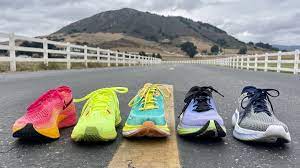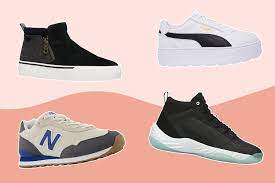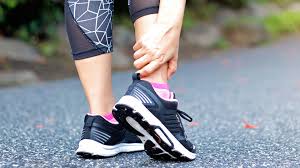I’ve always thought that running on the beach is a fantastic past time. Aside from the benefits, running along a beach’s environment and atmosphere can be far more enjoyable than doing so along a busy road or on a treadmill. But running across beach sand might be a little difficult, particularly if you’re wearing the wrong kind of shoes. But which kind is appropriate? I conducted tests to find out.
I went to my neighborhood beach and tried to run a mile on the same surface while wearing road running shoes, trail running shoes, and going barefoot in order to determine what kind of footwear is ideal. I then contrasted each technique to determine which seemed most natural.
There is no better way to run on sand than barefoot. Road running shoes come last, trail running shoes in close succession. Running barefoot allowed me to develop muscles in my feet that I otherwise wouldn’t have and gave me an incredible amount of grip. My feet received some protection while I ran in road and trail running shoes, but not nearly as much in the way of grip, traction, and general feel.
What Other Participants Contemplate
It’s important to note that a large portion of my experiment was entirely dependent on my opinions before we get into the specifics. In order to ascertain what other runners believe to be the most appropriate clothing for running on sand, I polled 277 runners to find out if they liked to run barefoot, in trail shoes, on the roads, or none of the above. The outcomes are in.
“Hey, athletes! Which Method Do You Like To Use the Most When Running in Sand?
The fact that the runners I spoke with expressed the same sentiments as me made me very happy. It’s clear that barefoot running prevails with over 50% of runners voting in favor of it, followed by trail and road running. I asked a few of the runners, and they said this:
Results of My Experiment
After hearing from other runners regarding the finest shoes for running on sand, let’s talk about my own experiences with each type of technique I employed in the experiment.
Sand-covered road running shoes
It’s usually not a good idea to run on sand with road running shoes on because you won’t profit from them any more than you would from running barefoot.
I was wearing Brooks Launch 8 edition road running shoes. These shoes provide lightweight cushioning, which is ideal for road running, and are meant to be excellent for quick transitions and increased ventilation. However, awful for sand jogging. I saw that the shoe’s breathability left a lot of it open, which made it possible for sand to enter.
Sand-covered trail running shoes
When it comes to footwear, trail running shoes are likely the finest choice for running on the sand. Running enthusiasts should be aware that the additional weight may be taxing.
For this running experiment, I was wearing the Hoka torrent 2 trail running shoes. The main selling point of these shoes, in my opinion, is their sticky rubber outsoles, which are designed to provide runners with the maximum amount of traction possible when they run on uneven terrain. I didn’t slide or stumble once while running on the beach with these shoes, so that was a huge help. Another crucial factor, in my opinion, was that these trail shoes are made to have some breathability. They were not as breathable as road running shoes, but they still prevented a lot of sand from getting inside my shoe, keeping my feet from overheating.
The additional weight of this trail running shoe was a significant drawback for me; I believe I would have rapidly became fatigued if I had been running more than a mile in them. Although the additional grip provided by the shoe helped to keep me in place, switching between feet was undoubtedly more difficult. Running on sand is undoubtedly safer when done with trail running shoes, but it’s also more difficult.
Running barefoot on the sand
The greatest way to run on sand is barefoot. Running barefoot gives your feet a lot of flexibility, makes it simple to maintain your balance and form, and works a lot of different muscles in your body.
I saw a significant difference the minute I attempted running the same mile barefoot. Even though trail running shoes tend to provide me more grip, I was still able to maintain my balance by spreading my feet apart. I was encouraged to utilize my feet more naturally and to pay attention to appropriate form because I was in intimate contact with the earth. When I run, I have a tendency to strike the ground with my forefoot, even though I should be concentrating more on using my midfoot. This was much simpler to accomplish when running shoes were taken out of the picture.
While it’s often the best option, running barefoot on the beach has drawbacks as well. Because of their increased exposure, my feet required constant attention, therefore I had to pay close attention to what they came into contact with. I could really feel my heels and ankles absorbing a lot of the energy that my shoes would typically be able to manage as I started to move from soft to firm sand. Although running on the sand in this manner might seem to be beneficial for strengthening the area surrounding the feet, doing so for an extended period of time could lead to injury.



